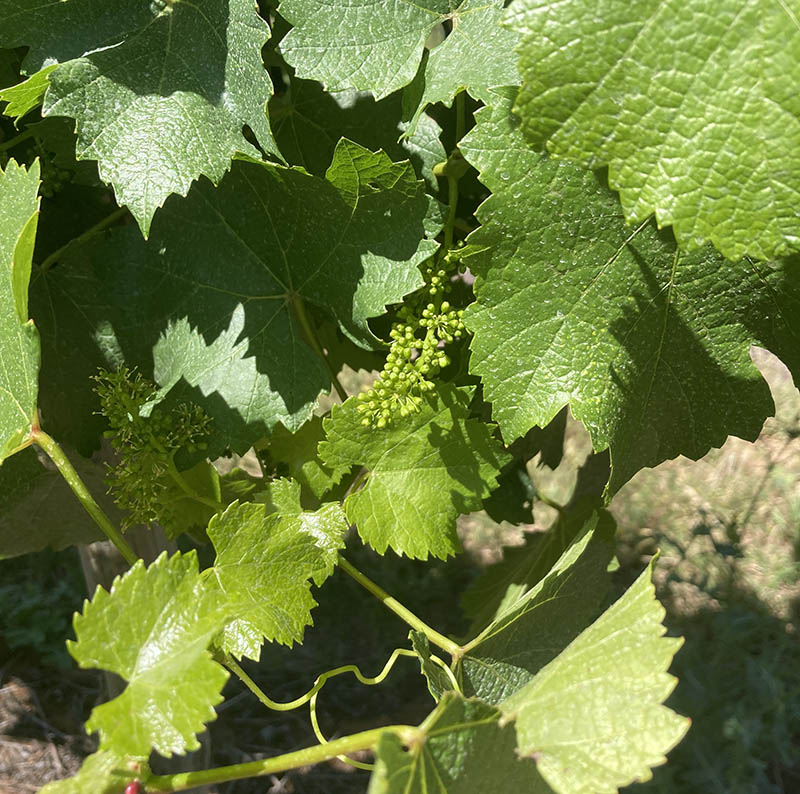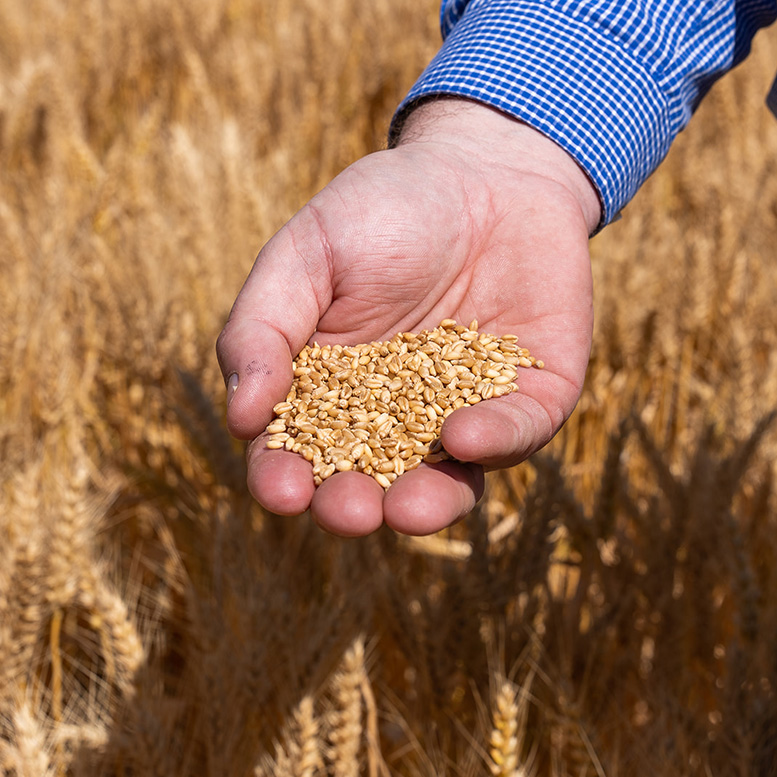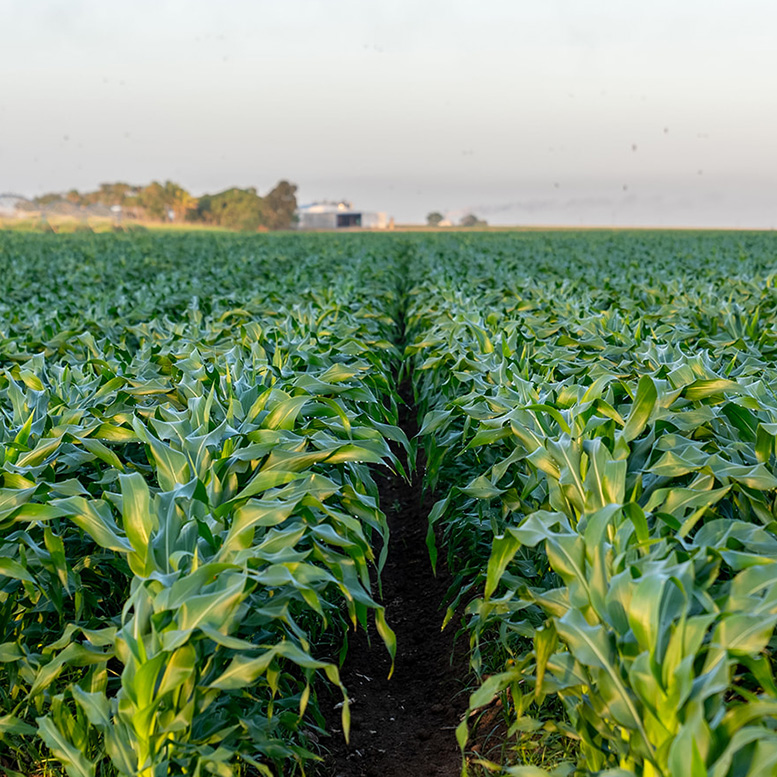Agronomic Insights
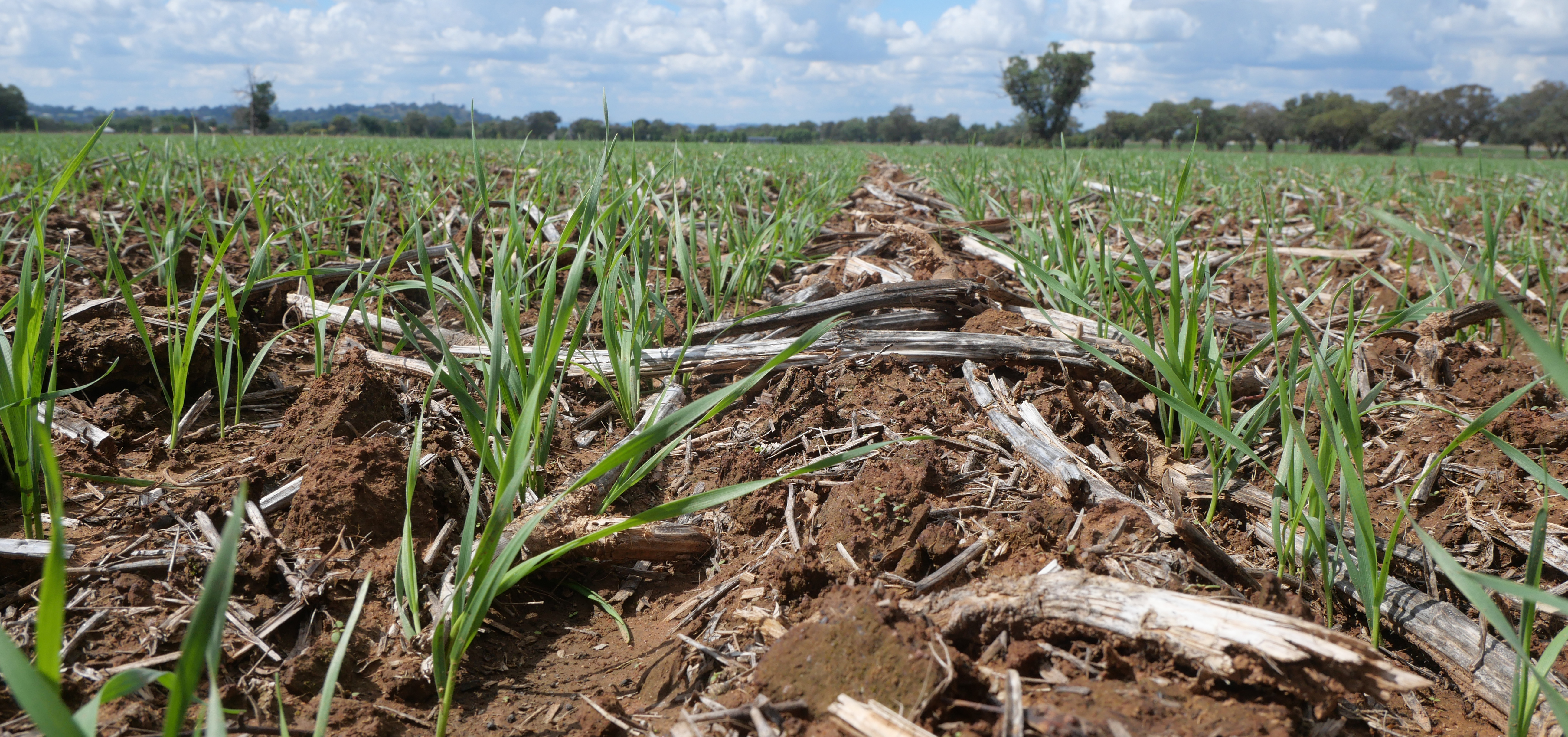
Clint Sheather – IPF Technical Agronomist
Crop disease was present in many southern winter crops last year. As well as stripe rust, Septoria, powdery mildew and scald were a problem for many growers. The risk of disease is high in 2024. Summer rainfall combined with delays to harvest and fallow weed control have increased the potential that disease inoculum will carry over via the ‘green bridge’ (fallow weeds and volunteers).
Key Points
- Disease was evident in 2023 and is likely to occur in 2024.
- Proactive disease management will be required in 2024 to optimise yield.
- Low soil nitrogen levels may mean growers will have to apply additional nitrogen to meet yield targets which may delay the onset of adult plant resistance (APR).
- For early protection against disease, flutriafol in furrow is an effective management approach.
- Understanding varietal disease ratings will help determine the appropriate management strategies.
Flutriafol 500 SC
Flutriafol is a highly systemic fungicide and when added to planting fertilisers for in-furrow application can provide excellent early season control for certain diseases in wheat, barley, and canola.
The rate at which Flutriafol needs to be added to fertiliser to achieve the desired application rate per hectare will depend on the rate at which the planting fertiliser is being applied.
For rates see the label.

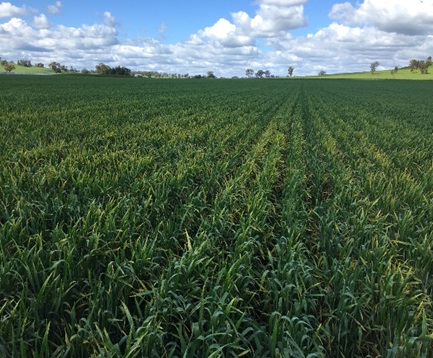
Placement
It is recommended that flutriafol treated fertiliser is placed in the seed furrow with the seed. When applied with fertiliser it enters the roots of the developing plant and is transported throughout the plant. Flutriafol breaks down slowly and remains available to be taken up by the roots for extended periods, which is essential for disease control during the first 6-8 weeks of the season.
If flutriafol treated fertilisers are placed below the seed or side banded away from the seed, poor early root access may reduce early protection. Seasonal factors like cold and wet soils may also affect crop emergence, root development, and slow the uptake of fungicide. Fungicide uptake by developing roots may also be reduced if the fertiliser rates are less than 40kg/ha.
When flutriafol is applied in-furrow as a fertiliser treatment in canola, wheat and barley, plants must not be grazed or cut for fodder for four weeks after planting.
When applying fertiliser with the seed it is important to take into consideration the rate of nitrogen in direct contact with the seed and the potential to adversely affect germination and emergence.
The rate at which nitrogen can be safely applied in contact with the seed depends on many factors including the soil type, its moisture status, the row spacing, amount of soil disturbance, e.g. minimum tillage versus a fully prepared seedbed and crop type. The rate can be as low as 15 kg/ha N in winter cereals where soils have marginal soil moisture and disturbance is minimal, e.g. at wider row spacings with a disc opener. Small-seeded crops, such as canola, are less tolerant of nitrogen with the seed than the larger seeded cereal grain crops. Read more about fertiliser application with the seed.
Fertilisers
The effect of flutriafol fungicide on product quality varies with the product and local climatic conditions. The more humid the environment is, the more likely it is that storage characteristics and flow rates will be affected. The treatment of fertiliser with fungicide may also affect flow rates through planters. Application equipment should be calibrated to ensure the correct rates of fertiliser and fungicide are applied. Treated fertiliser should not be stored for extended periods of time before use.
Flutriafol fungicide should not be added to SuPerfect, due to the variation in its particle size.
DAP is more likely to be adversely affected by the addition of flutriafol fungicide than MAP and MAP-based fertiliser such as Granulock® SS and Granulock Z. This is because the higher nitrogen content of DAP makes it more likely to absorb moisture and DAP has a lower Critical Relative Humidity than MAP. Incitec Pivot Fertilisers has found that the quality of DAP is most likely to be affected by the addition of flutriafol fungicide at rates above:
- 4 L/t ex Geelong
- 6 L/t ex Distribution Centers in South Australia.
Higher rates of addition (up to 6 L/t) can generally be used with MAP. Blends containing more than 35% Urea and/or Gran-Am® (granulated ammonium sulfate) may be adversely affected by the addition of flutriafol 500g/L active fungicide. Incitec Pivot Range Blends that contain more than 35% Urea and/or Gran-am include:
- Crop Lift 15
- Granulock Z 15 S
- Granulock Z 20 S
- Granulock Z 25
- Granulock Z 29
- Mallee Mix 2 Zn 1.5%
- N-Rich 26
- N-Rich 32:10
It is recommended that the concentration of Urea and/or Gran-Am not exceed 50% in any blend to which flutriafol 500g/L active fungicide is added.
The rate at which flutriafol fungicide needs to be added to fertiliser to achieve the desired fungicide application rate per hectare will depend on the rate at which the planting fertiliser is being applied. The higher the fertiliser rate, the lower the fungicide addition rate will be. Two things to keep in mind are:
- at low addition rates, less than 2 L/t (two liters per tonne), coverage of the fertiliser granules with fungicide is less uniform.
- addition rates over 4 L/t may adversely affect the flow rate and handling characteristics of dusty or poorly granulated fertilisers, and those high in nitrogen.
As a result, customers may be required to sign a disclaimer when ordering fertilisers treated with flutriafol 500g/L active at rates outside of the 2 – 4 litres/tonne range.
Nitrogen interactions & stripe rust
The nitrogen status of a wheat crop is known to affect the level of stripe rust infection. High nitrogen levels are known to increase the severity of stripe rust infections. The presence of disease can also affect the amount of nitrogen used by the crop. Understanding these interactions will help determine the most appropriate management strategy to reduce disease severity.
- High N nutrition can delay crop maturity and the expression of APR genes within a variety.
- These crops can also be more susceptible to stripe rust infections due to having thicker canopies and higher leaf nitrate levels, a food source for the pathogen.
- Under high levels of N nutrition growers need to manage a variety as one category lower in resistance (e.g. manage an MRMS as an MS)
Understanding varietal disease ratings
Changes in disease susceptibility are common and it should be remembered that it is not the variety that has changed but the pathogen has changed. Understanding the varietal disease rating of individual crop varieties is an important step to determine the appropriate management strategy to control crop diseases. Disease ratings can be found online at (nvt.grdc.com.au) providing current variety ratings for a range of diseases and pathotypes. Varietal ratings relate to all stages of crop development and the level of APR within a specific variety.
Transport and Handling
Equipment (such as augers, silos, and trucks) used to store, handle and transport fertiliser must be thoroughly cleaned before being used for other purposes, e.g., for grain. The presence of fungicides may affect compliance with food safety standards and the marketability of farm produce on domestic and international markets. More detail can be found in the IPF Use Directions Flutriafol.
Sweep or use compressed air to remove most of the dust, then wash with detergent. Do not allow rinsate to enter waterways. If on farm, the waste can be disposed of by spreading lightly and uniformly on agricultural land that will be planted to crops in which the fungicide is registered for use.
Safe Handling
Avoid eye or skin contact and dust inhalation. Do not handle fertiliser treated with fungicide with bare hands.
Further Information
For more information and advice about fungicides, please contact Clint Sheather on 0475 439 316 or email: clint.sheather@incitecpivot.com.au.
Or Jim Laycock on 0427 006 047, email: jim.laycock@incitecpivot.com.au
References
Paddock Practices: Stripe Rust 2021. GRDC https://grdc.com.au/resources-and-publications/all-publications/paddock-practices/2021/north/november/paddock-practices-stripe-rust
StripeRust_May2023_final_web.pdf (grdc.com.au)
Disclaimer
Incitec Pivot Fertilisers manufactures and sources fertilisers from other suppliers. The fertiliser supply chain extends beyond the company’s direct control, both overseas and within Australia. Incitec Pivot Fertilisers hereby expressly disclaims liability to any person, property or thing in respect of any of the consequences of anything done or omitted to be done by any person in reliance, whether wholly or in part, upon the whole or any part of the contents of this article. This is a guide only, which we hope you find useful as a general tool. While Incitec Pivot Fertilisers has taken all reasonable care in the preparation of this guide, it should not be relied on as a substitute for tailored professional advice and Incitec Pivot Fertilisers accepts no liability in connection with this guide.
Resources
DOWNLOAD INSIGHTDISCLAIMER
This is a guide only, which we hope you find useful as a general tool. While IPF has taken all reasonable care in the preparation of this guide, it should not be relied on as a substitute for tailored professional advice and IPF accepts no liability in connection with this guide. Incitec Pivot Fertilisers manufactures and sources fertilisers from other suppliers. The fertiliser supply chain extends beyond the company’s direct control, both overseas and within Australia. Incitec Pivot Fertilisers hereby expressly disclaims liability to any person, property or thing in respect of any of the consequences of anything done or omitted to be done by any person in reliance, whether wholly or in part, upon the whole or any part of the contents of this article.



